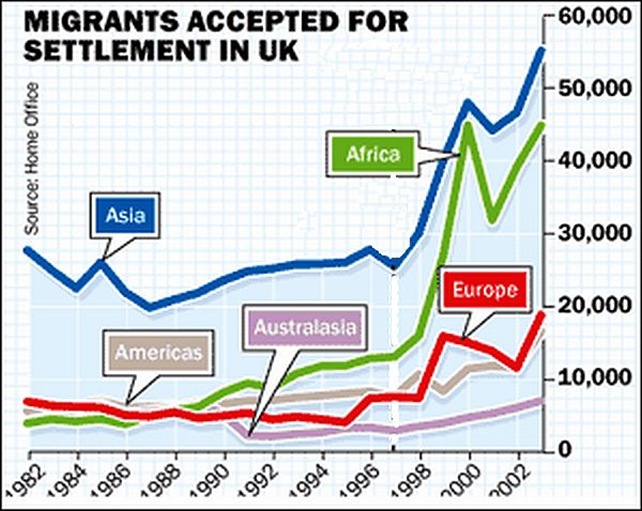Migrationwatch UK
April 17, 2014

Migration Watch UK today issued a new assessment of the cost of immigration to the tax payer. The outcome is that immigrants cost the taxpayer over £140 billion or more than £22 million a day over the 17 years 1995 – 2011.
The Migration Watch study followed the methodology of a recent paper from the Centre for Research and Analysis of Migration (CReAM) but queried some very unrealistic assumptions. Even on their own assumptions, CReAM had calculated that the overall effect of immigration since 1995 has been a net cost of £95 billion. This result was contained in a table annexed to their paper but it was not even mentioned in the text of the report, still less in the summary or the press release – a truly astonishing omission.
CReAM also claimed a net benefit of £25 billion from recent migrants which they described as “a very sizeable fiscal contribution”. However, analysis by Migration Watch finds that the true figure is more likely to be a net cost of that amount.
To get any positive result from this group, CReAM had to make the extreme assumption that even the most recent arrivals contribute as much as long-term migrants and the UK-born when both their younger age and lower incomes make this most unlikely. They also included the EU 15 with the A8 which had the effect of obscuring the cost of the growing number and proportion of relatively low paid migrants from Eastern Europe.
They then overstated the revenue paid by recent migrants by assuming for example that:
- These immigrants had on arrival, the same amount of UK investments as the resident population.
- They also immediately occupied the same kind of homes and therefore paid the same amount of council tax as the resident population.
- Self employed people pay all of the UK’s Business Rates,
- Amongst the self-employed, agricultural and construction workers pay the same amount of income tax as lawyers and accountants

As regards government expenditures on these migrants, they underestimated them by assuming for example that:
- Immigrants received no more in means-tested welfare payments than the average for the general population, despite clear evidence of lower income.
- Immigrants claiming housing benefit received no more than the UK average despite their much higher concentration in London and the South East where payments are nearly twice as high as in low cost areas.
The effect of adjusting for these assumptions is to reduce the “contribution” of recent EEA migrants from £22bn to nothing at all. This disposes of the CReAM claim that they contributed 34% more in revenues than they received in state expenditures.
As for a further claim that recent EEA migrants were only half as likely to claim ‘benefits or tax credits’, this overlooks the fact that they disproportionately claim the more expensive of these. For example while they might be much less likely to claim Job Seeker’s Allowance (JSA) they are much more likely to claim both housing benefit, which in London is on average twice the amount of JSA, and Tax credits which can easily be four times that amount or more.
Commenting, Sir Andrew Green, Chairman of Migration Watch UK, said :
“Our report finally disposes of the immigration lobby’s oft repeated claims that immigration reduces our tax burden. The total cost is high and increased dramatically between 1995 and 2011, providing no compensation for the overcrowding of this island which we are experiencing, largely as a result of immigration.”
- The CReAM report can be found at http://www.cream-migration.org/publ_uploads/CDP_22_13.pdf
- The calculations referred to above are based on the average cost method which CReAM paper favoured in reporting their results. They also considered the marginal cost method which some other researchers have preferred. The Migration Watch paper addresses that method in Annex A to this paper, with broadly similar results.

